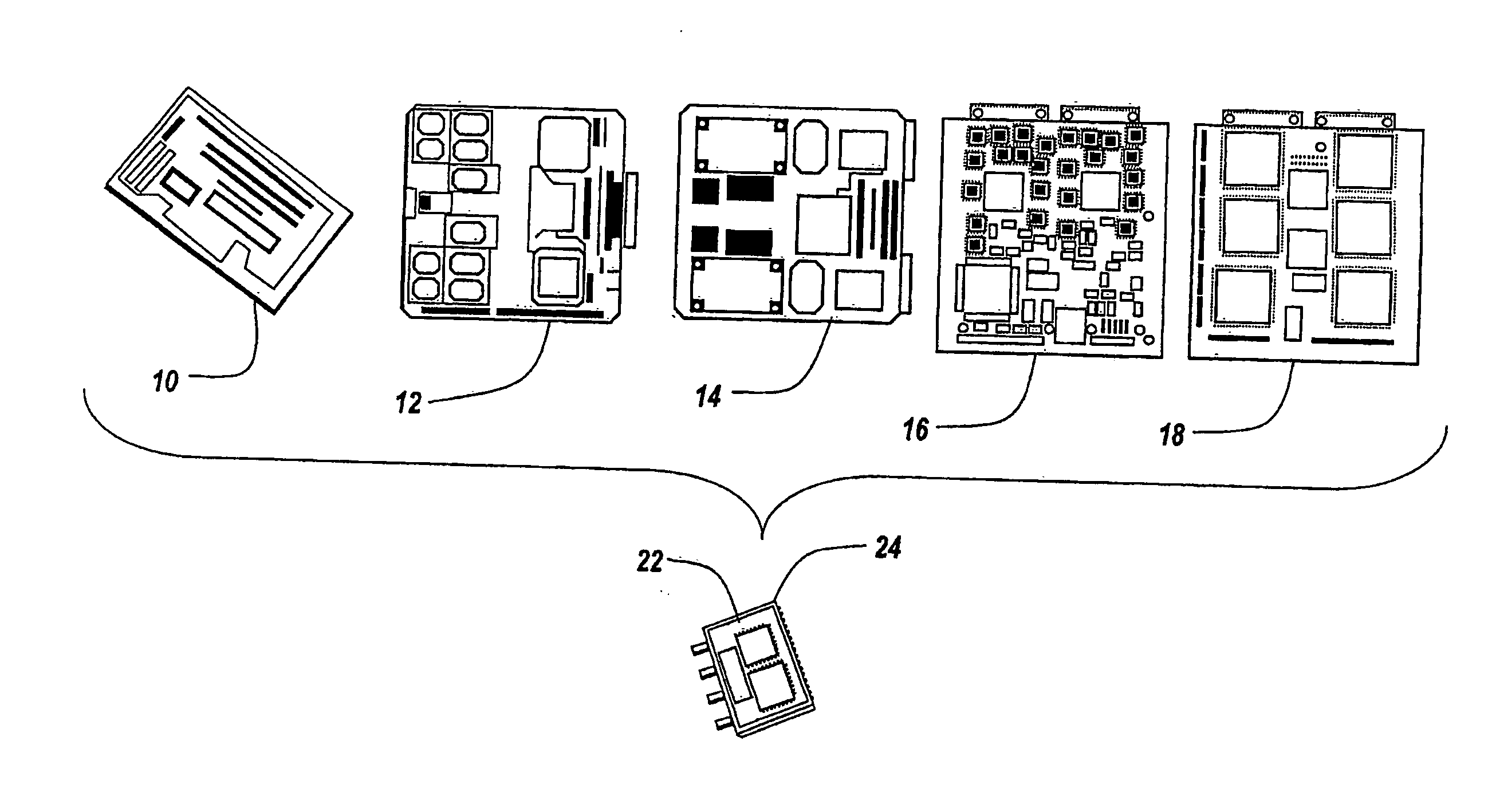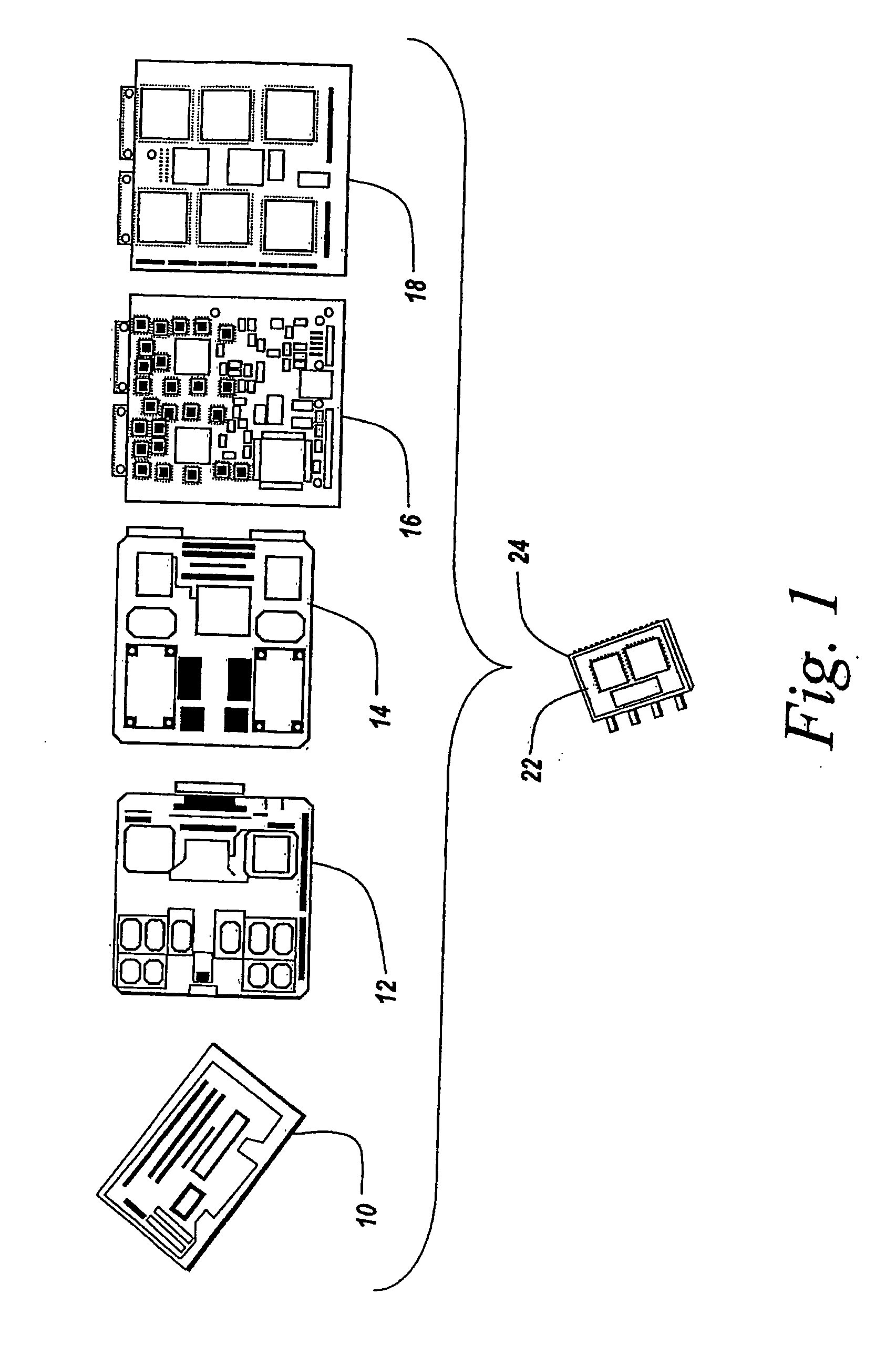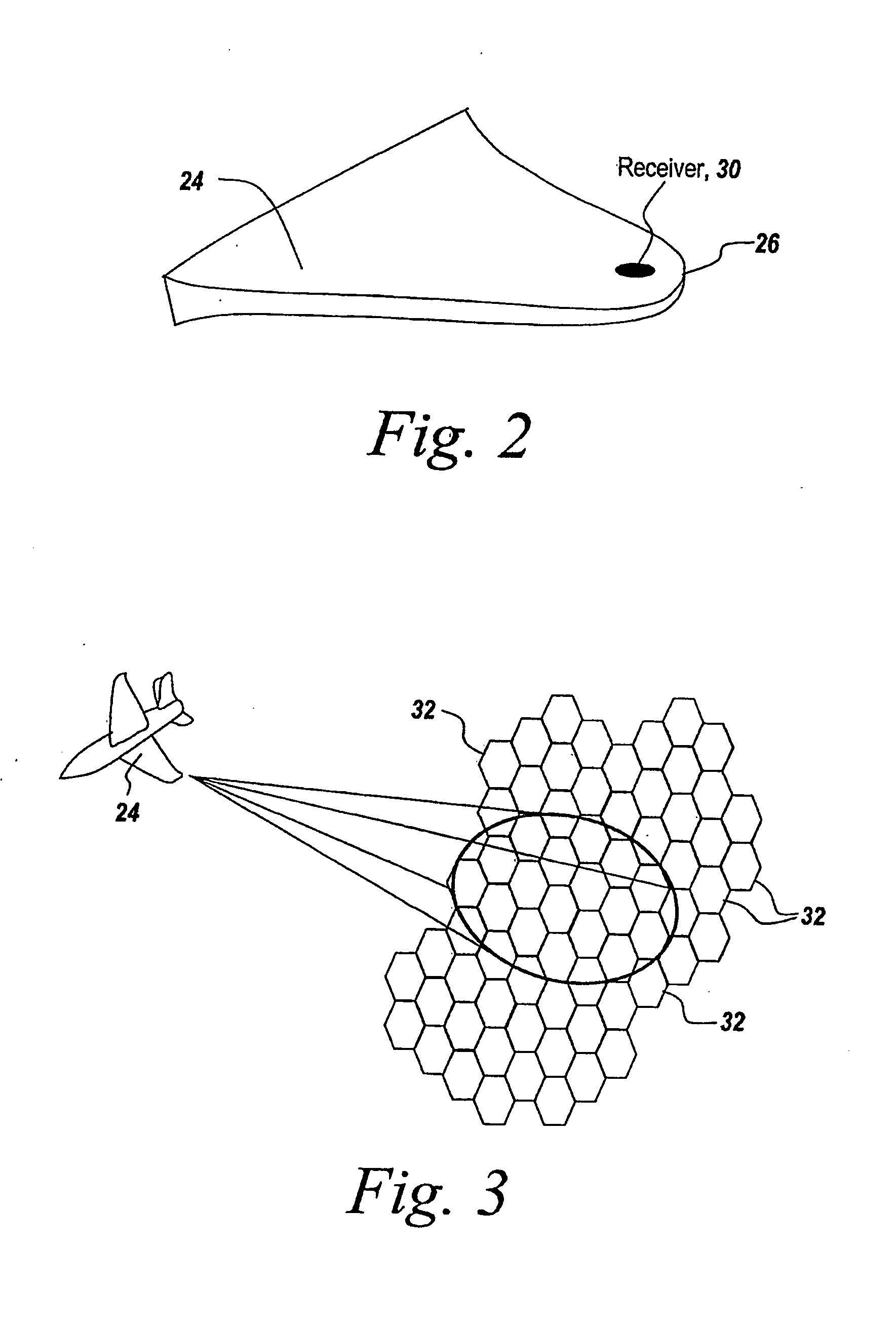Multifunction receiver-on-chip for electronic warfare applications
a receiver and multi-functional technology, applied in the field of electronic warfare receivers, can solve the problems of excessive power consumption, excessive power consumption, and high cost of drivers of such modular systems, and achieve the effects of improving receiver sensitivity, reducing power consumption, and efficient digitization
- Summary
- Abstract
- Description
- Claims
- Application Information
AI Technical Summary
Benefits of technology
Problems solved by technology
Method used
Image
Examples
Embodiment Construction
[0044] Referring to FIG. 1, current modular digital EW receivers have a number of modules 10, 12, 14, 16 and 18, respectively an RF converter module, a module for the first half of an IF conversion section, a second module of an IF conversion section, an RF digitizer module, and an RF digital processing module. These modules are cabled together in an electronics suite within an aircraft so as to provide the requisite digital receiver functions for surveillance, intelligence gathering and oftentimes for direction finding and fire control. Typically, each of these modules is 6 inches on a side so as to comprise at least 30 inches of rack space within the electronics suite of the aircraft.
[0045] As mentioned hereinbefore, these modules are usually interconnected by coaxial cables as well as being connected by coaxial cable to various antenna elements in the antenna array, usually embedded in the wing 20 of an aircraft 21.
[0046] As mentioned hereinbefore, the weight, power consumption...
PUM
 Login to View More
Login to View More Abstract
Description
Claims
Application Information
 Login to View More
Login to View More - R&D
- Intellectual Property
- Life Sciences
- Materials
- Tech Scout
- Unparalleled Data Quality
- Higher Quality Content
- 60% Fewer Hallucinations
Browse by: Latest US Patents, China's latest patents, Technical Efficacy Thesaurus, Application Domain, Technology Topic, Popular Technical Reports.
© 2025 PatSnap. All rights reserved.Legal|Privacy policy|Modern Slavery Act Transparency Statement|Sitemap|About US| Contact US: help@patsnap.com



